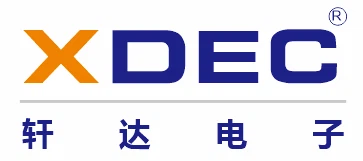Multimedia speakers (such as those used in electronic keyboards, audio systems, etc.) do face a risk of demagnetization in high-temperature environments, but the extent depends on the magnet type, temperature threshold, and exposure duration. Below is a detailed analysis:
1. Magnet Types & Heat Resistance
(1) Ferrite Magnets
Common in mid-to-low-end speakers (e.g., entry-level keyboards, budget multimedia speakers).
Temperature range: Approximately -40°C to +250°C (short-term), but prolonged exposure to >80°C may cause gradual demagnetization.
Characteristics: Low cost, but magnetic strength declines noticeably under heat (e.g., inside a parked car in summer or under direct stage lighting).

(2) Neodymium Magnets
Used in high-end speakers (e.g., studio monitors, stage keyboards).
Temperature range: Typically -40°C to +150°C, but some grades (e.g., N38EH) can withstand up to 200°C.
Characteristics: Strong magnetic field and compact size, but less heat-stable than ferrite-avoid sustained high temperatures.
(3) Alnico Magnets
Found in vintage speakers or some instrument amplifiers (e.g., guitar amps).
Temperature range: Up to 500°C, but prone to demagnetization from mechanical shock.
Characteristics: Warm sound, but rarely used in modern speakers.
2. Critical Conditions for Demagnetization
Short-term exposure (e.g., 1–2 hours):
Ferrite: Generally safe below 100°C.
Neodymium: Begins weakening above 80°C, significant risk above 120°C.
Long-term exposure (e.g., days):
Continuous temperatures above 60°C may cause permanent demagnetization in both types.
3. Additional Heat-Related Issues
Voice coil deformation: High heat can melt adhesives or warp the coil former, causing distortion.
Diaphragm aging: Paper cones or rubber surrounds may become brittle and crack.
Circuit damage: Overheating of internal amplifier components (e.g., capacitors) can indirectly affect speaker performance.
4. Preventive Measures
Avoid:
Prolonged direct sunlight (e.g., inside cars, outdoor performances without shade).
Placement near heat sources (e.g., stage lights, heaters).
Active cooling:
High-power systems (e.g., PA speakers) may require heat sinks or cooling fans.
Choose heat-resistant models:
Neodymium: Opt for high-temperature grades (e.g., N30SH, N33EH).
Ferrite: Industrial-grade models (e.g., Y30BH-1) offer better stability.
5. How to Check for Demagnetization?
Magnetic test: Use a metal object-if attraction weakens noticeably, demagnetization may have occurred.
Sound quality changes: Reduced bass response or lower volume (rule out other faults first).
Professional testing: Use a gauss meter to measure flux density (compare with manufacturer specs).
Conclusion
While multimedia speakers can demagnetize under extreme heat, proper usage and component selection minimize risks. For high-temperature environments (e.g., outdoor performances), we recommend:
Choosing high-temp neodymium or industrial ferrite magnets.
Avoiding prolonged static exposure and ensuring proper ventilation.
Regularly inspecting magnets and replacing aged parts.
Let me know if you need further requirements, Pls contact XDEC !
